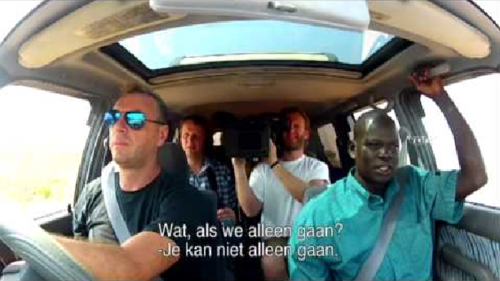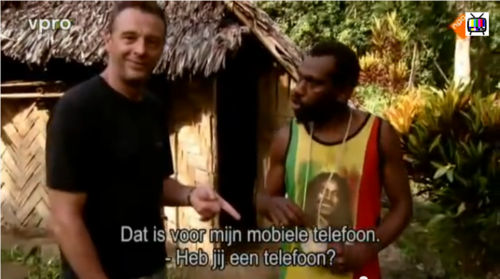
Reizen Waes: This is clearly bullshit indeed
Staging authenticity on Vanuatu
Tom Waes visits so-called cannibals in 'Reizen Waes' (2013). It turns out that there are no cannibals on the island: the roleplaying is an example of 'staging authenticity' (Greenwood, 1982).
Reizen Waes
Critics are of the opinion that television is a constructed truth, which bears no relation to reality, and they portray viewers as passive consumers who do not realize they are being fooled by the television producers (Pol, 2014, p.116). In the Flemish television programme ‘Reizen Waes’ (2013) , the Belgian Tom Waes travels to countries, which are not appropriate for tourism. He travels to Vanuatu in episode 6; this is a very vulnerable paradise with high risks of hurricanes, tsunamis, volcanic eruptions and earthquakes. The island has a big history of cannibalism which takes a big part of this episode: Tom Waes is going to have a sleepover at a place with cannibals. At first he seems very nervous about his stay on the island. The producers are trying their best to make it all look very scary and horror-like. The guide of the group says they cannot visit the little village by themselves; a local guide is a must!

Figure 1: "What, if we would go by ourselves? -You can't go by yourselves"
Rituals
Tom and his team get a very warm welcome by the tribe he is visiting. The first ritual he sees is for new born babies. Instead of a new born, there lays a baby of a couple of months old. Tom Waes seems suspicious and is questioning the event. He interviews a tribe member later on in the episode. After a couple of questions he asks directly if this is their true way of living; looking like a tribe with body ornaments etc. Tom is very surprised when the man answers very honestly that after their re-enactment they change their tribe clothes in a pair of jeans and a shirt, living a totally different life than they make it appear. After a call on his cell phone ("Do you have a cell phone?", asks Tom perplexedly) that a group of tourists is coming, the man changes into his tribe appearance. Well, this was totally unexpectedly for Tom and the spectator.

Figure 2: "That's for my mobile phone. -Do you have a phone?"
What is real and what is fake
It turns out that nobody eats humans on Vanuatu; they used to do this a long time ago, but not anymore. On the island you can see some human bones, but you can question the realness of this too. This whole role play has a term: staging authenticity; putting in scene of the local culture to give an impression of authenticity for a touristic public (Greenwood, 1982). Obviously, this originates out of the huge demand from the touristic market. The tourists want an authentic experience to tell and to share at home. Whether they are aware of the fact that it is just a play is another question - who knows how many tourists are aware of being fooled. At the same time, this ‘fake show’ protects the real tribes of tourism, because tourism is an attractive phenomenon, while at the same time it can be disastrous. The fake tribes are a protection wall of the real tribes. In an age wherein, thanks to digital technology, everything is possible, there is a growing need to connect with authentic elements of the past. And precisely because of the scope of this digital ingenuity, it is increasingly difficult to determine what is real and what is fake (Pol, 2014: 126). Televions fiction thus functions as a bridge between past and present (Pol, 2014: 129), but at the same time between real and fake.
References
Greenwood, D. J. (1982). Cultural "authenticity". Cultural Survival Quarterly,6(3), 27-28.
Pol, M. (2014). This is Clearly Bullshit. In Companion to European Heritage Revivals (pp. 113-130). Springer International Publishing.
Reizen Waes. (2013). Aflevering 6: Vanuatu.